Wildflowers of the Maasai Mara
A different lens on Kenya’s most famous national park (9 minute read)
Before I start, I would like to thank all the people who looked after me on this part of my visit to Kenya. My tour was organised by Exodus Travels, but used two lovely local tour guides, Olemaantu of Olemaantu Adventures and David from Maasai Loita Tours. Their knowledge and skill made for a fascinating experience. I would also like to acknowledge the wonderful staff at the Sentrim Elementaita Lodge, Mara Kimana Camp and Sarova Panafric Hotel. Their friendliness and kindness went beyond customer service.
With gently rolling contours painted in the soft green of fresh grass, and scattered trees and shrubs in darker shades, the landscape of the Maasai Mara is not what I expected of an African wildlife park. It isn’t yet the wet season, but there has been recent rain, so the grass is growing and there are plenty of soft acacia shoots to tempt the animals. There are wildflowers too, the two most common speckling the grass in white and shades of apricot. They grow low to the ground, but their flowers are an inch or more across, so they make for a spectacular display amid the close-cropped grass.
Before my tour even entered the park, I was spotting the flowers from the vehicle’s window. But all I could get was a general impression of them, and for me to identify completely unknown plants I need to see them close-up. My chance came when we arrived at our “camp”. Around the buildings, the camp appears typical of all the hotels I’ve stayed at in Kenya – beautifully manicured grounds with cultivated flowers I could see in any tropical country. But some of the natural vegetation was preserved. We were shaded by the original trees, and on the fringes there is some natural shrubland and grass. I spotted the white flower just inside the gate, and as soon as I have the chance, I walk back there to look at it. With the help of one of our guides, Olemaantu, and my field guide to wildflowers of Kenya, I had soon learned its name – tissue paper flower.
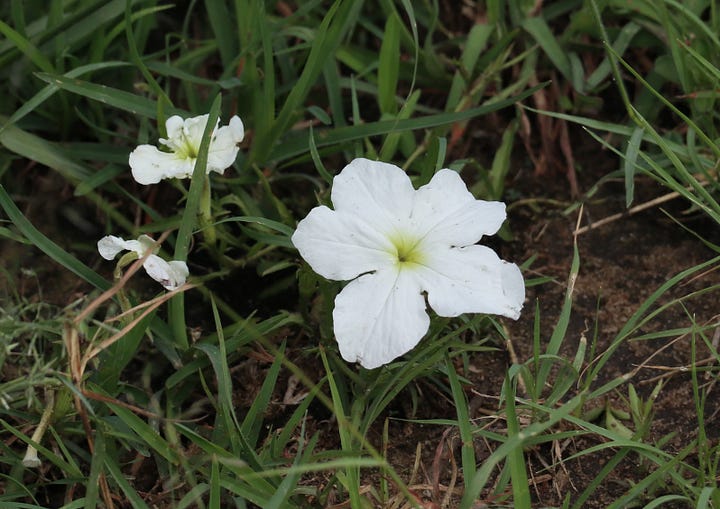
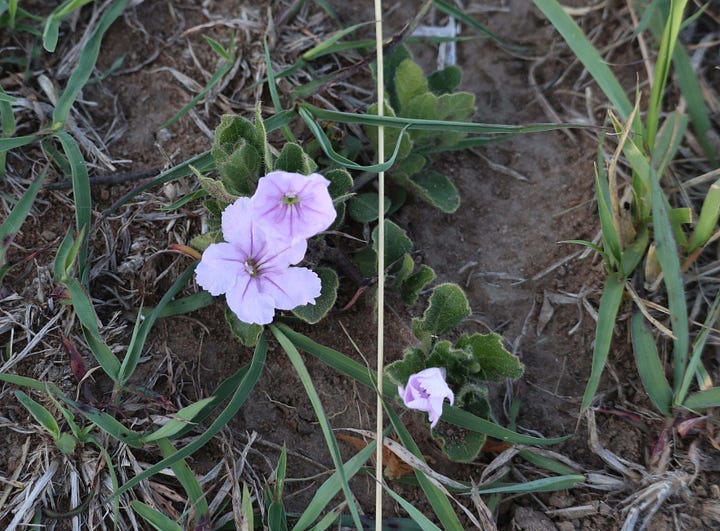
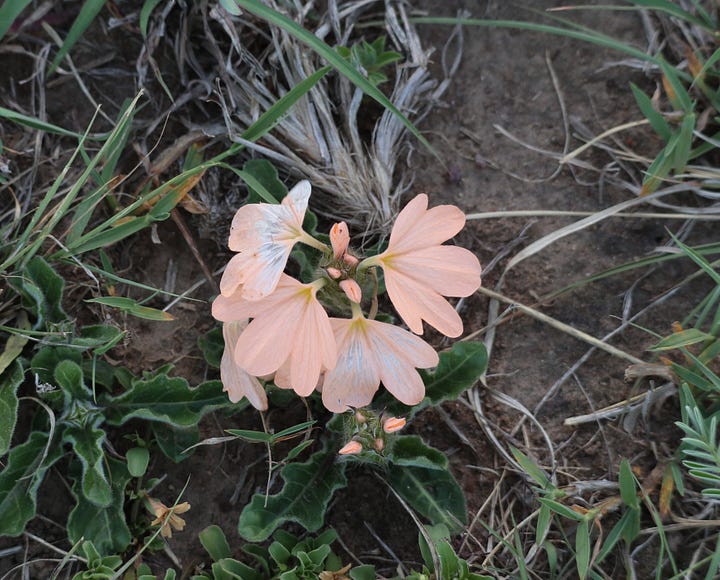
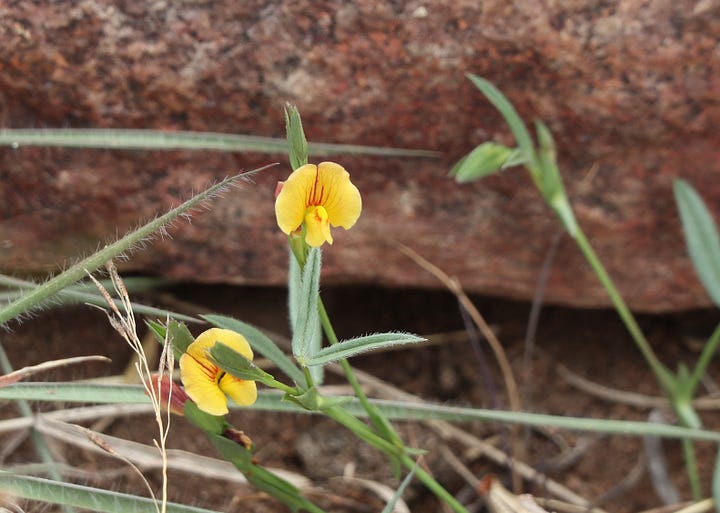
I’m not ignoring the animals – more on them to come – but I know that I’m seeing a different Maasai Mara from the average visitor. I’m constantly asking Olemaantu the names of plants. Sometimes he knows an English name, but mostly he gives me his local name, the Maasai name. This works for me, because another field guide I’ve acquired, Trees and Shrubs of East Africa, lists all the local names. I learn olkinyei, a glossy green shrub or small tree related to the ebony tree, ol-tepesi, the common acacia tree around the camp and olng’oswa, with its distinctive form – a long trunk topped by a tangle of branches, well out of reach of giraffes. I was also excited to see a sausage tree, one of the distinctive trees of the African savannah. It’s another tree which holds its foliage above giraffe-browsing height, but its sausage-shaped fruits hang down below the foliage, giving the tree its name. I didn’t see any of the ‘sausages’ though, because they are quickly discovered and eaten by elephants, which disperse the seeds.
I was so keen to learn all the plants, that Olemaantu and David asked the camp staff if there was someone who could show me more of the plants growing in the hotel grounds. They sent Gideon, one of the security guards, to help me. Not only could he tell me the local names, but also told me about the many ways that the Maasai people use the plants. One, in particular, I took note of. He told me they pick a handful of it, crush it and then inhale it to clear a blocked nose. One of our group had a cold, so I picked a bunch for her the next day and she told me it worked very well.
Learning about the plants gave a different perspective on the environment and the animals. The influence of browsing and grazing mammals is obvious, with many wildflowers growing low to the ground and shrubs bearing fearsome spines. The influence of water is clear too – there’s simply not enough of it to grow forest on most of this land. There are occasional trees on the broad hills, but most of them grow along the banks of streams. The plants also provide a clue to the animals which might be present in an area. One of the first plants Olemaantu named for me was a shrub with brownish stems and leaves which are white on the underside. He commented that lions particularly like to sleep in patches of it, because it has a smell which repels flies. A couple of days later we pulled in beside a thicket of it and stopped. Sure enough, there were two male lions asleep in its shade.
For a botanist, the challenge of an African wildlife park is that it’s not a safe place for people to wander around, at least not people who don’t know the environment. But there were occasional stops, for breakfast or lunch, or at certain lookout points, when we were allowed to get out. As soon as I was out of the vehicle, I’d be peering at the ground and looking at the plants. At each stop there would be slightly different species, and I’d get my camera out, recording everything I found so that I could identify it later.
But the main reason most people visit the Maasai Mara is for the wildlife, and I won’t deny that it was amazing. My favourite species was probably the zebra. There are so many of them that it’s possible to become blasé, but they fascinate me because every one has a subtly different pattern of stripes. There were more kinds of antelope than I could keep track of – my favourite was the topi, which could often be seen climbing on top of anthills, or, in the case of the photo I’ve included below, mounds of dirt left after earthworks. There were giraffes, warthogs and wildebeest. There were maribou storks, secretary birds, ostriches and so many other birds that I lost track of the names. There were elephants, and I saw adults with magnificent tusks as well as some adorable babies. There were hippos in the water and huge herds of buffalo on the hills. There were predators too. We got glimpses of cheetahs, including a group of four cubs, and a leopard. We took a short walk along the bank of the Mara River, with an armed guard, and got closer to a crocodile than I ever expected. There were lots of lions too.
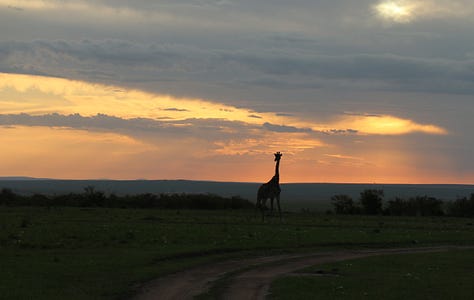
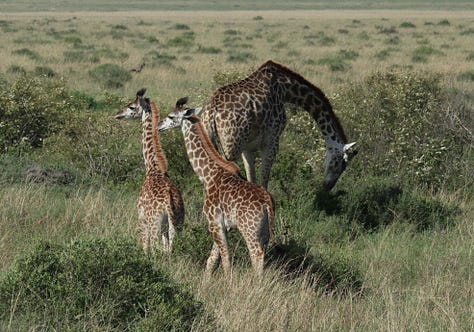
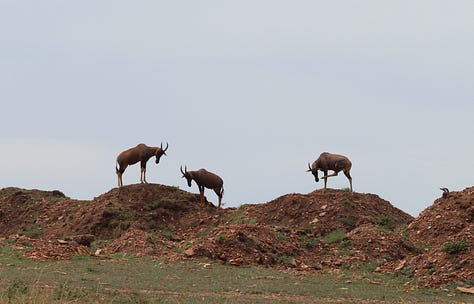
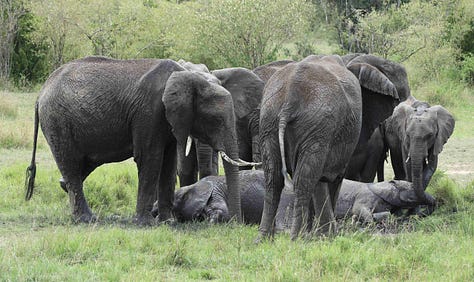
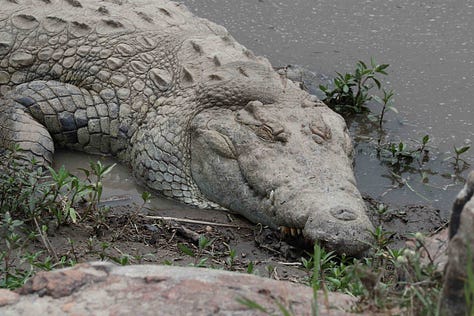
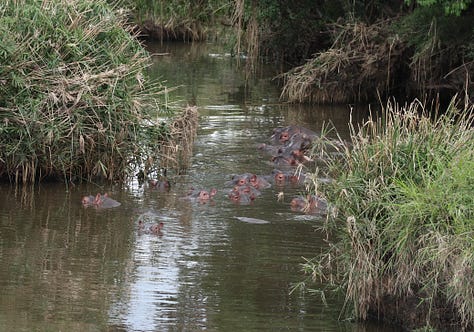
Seeing three lionesses eating a baby giraffe was a reminder that we were in a natural environment, where the animals do what they do with minimal interference from humans. We watch them from vehicles, and that’s mostly it. But people are as much a part of this landscape as lions and elephants – Africa’s savannahs are the cradle of humanity, where we all come from. The fringes of the Maasai Mara National Park illustrate this fact. They are complex environments, where people still live largely traditional lives and face difficult realities from the proximity to so much wildlife. Cows and sheep compete with topi and zebras for the freshest grass. Every night, Maasai bring their animals in to a compound surrounded by their houses and a fence, to protect them from predators. It isn’t only predators which are threat – Olemaantu pointed out that he considered the buffalo to be the most dangerous animal in the park, because they can be aggressive and will charge at people.
As a tourist, safe in a vehicle or behind an electric fence, there’s none of that. We were sleeping in luxury “tents”, with a roof and three walls made of heavy, waterproof fabric, but with a proper floor and with spacious bathrooms attached. Every time I turned on the tap, I was aware than in some of the villages I passed, women were still fetching their water from streams and rivers. Those who are luckier have access to water from a bore. Even in cities, there isn’t necessarily reliable running water. As a rule, water supplies are intermittent. A 2016 paper suggested that, on average, water is supplied for 10-15 hours per day in Kenya. However, my conversations suggest that in many areas there may be water supplied for a limited time only once or twice per week, so it has to be stored until the next time water is available.
It's an uncomfortable experience to be in a place where there’s such a contrast between the life I’m living as a wealthy tourist and the everyday experience of the people around me. It isn’t only that there’s a contrast between the experience of the tourist and those who have the least, such as those in the many Maasai villages I passed where there were no electricity lines going to the houses, and those living in Nairobi’s informal settlements. Even the average Kenyan doesn’t take access to things like water, sanitation, electricity and refuse collection lightly. I’ve mentioned the challenges with water already, but electricity is another example. Only the very wealthy can afford to cook with electricity, so most Kenyans use a combination of gas from portable cylinders and charcoal, depending on what they are cooking.
Despite my discomfort at being a wealthy tourist, I’m also aware that tourism is a major source of income in Kenya. The Kenyans that I’ve spoken to seem to delight in showing off their country, and this seems to apply as much to those who aren’t working in tourism as to those who are. The guides haven’t shied from sharing some of the realities of how people live – when asked, they’ve talked about access to water and electricity, Nairobi’s traffic, the cost of living and crime. The other Kenyans I’ve met have been open as well. But they have all encouraged me to tell everyone that Kenya is a great place to visit. I can’t disagree with them – I certainly had a wonderful time there.
I’m leaving Kenya now and returning to New Zealand, but I haven’t finished writing about Kenya. I have spoken to some amazing people who have been very generous with their time and wisdom, and so I will be sharing what I’ve learned from them in future articles. It’s almost goodbye to Kenya, but not quite. There is so much more that I’m looking forward to sharing.






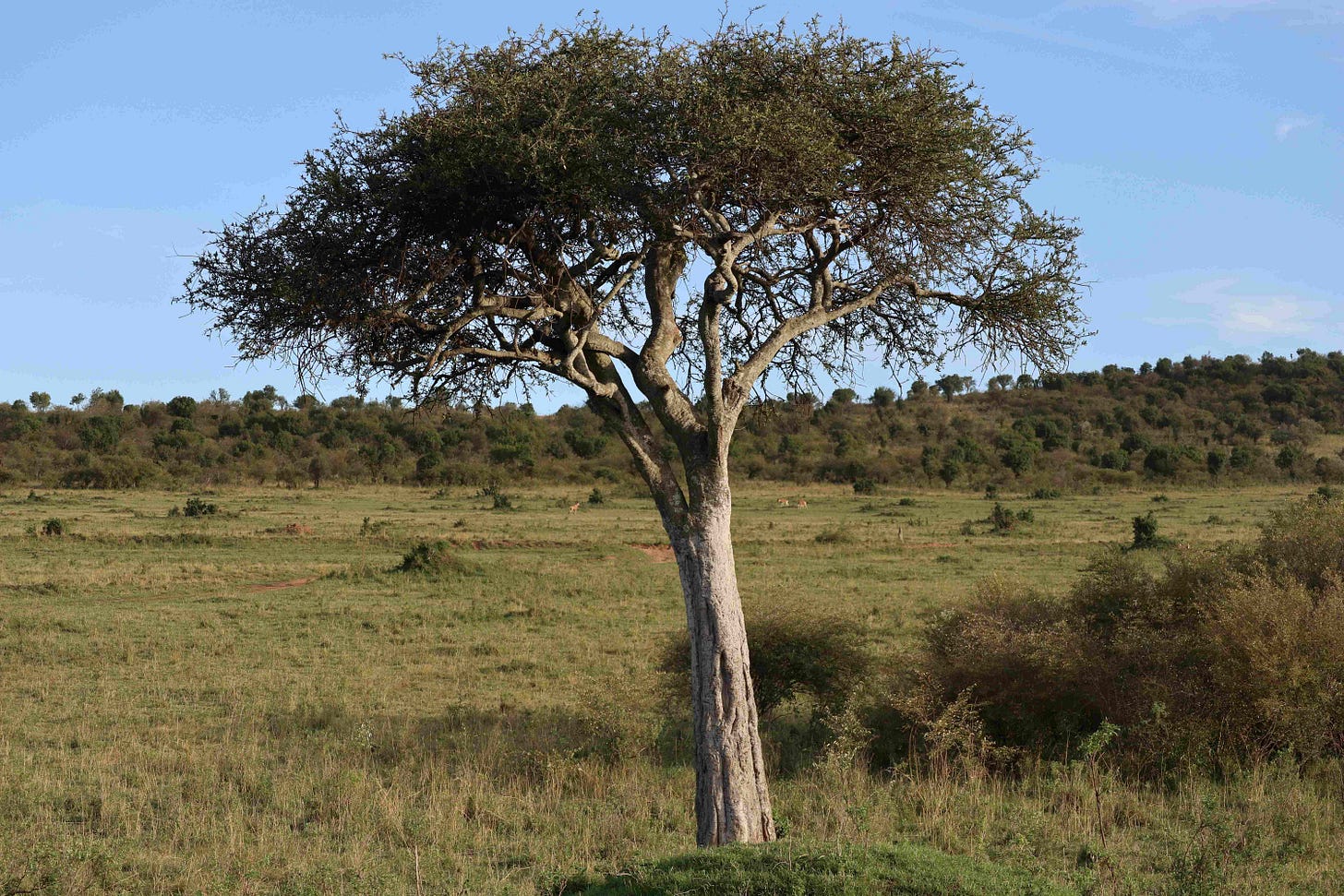
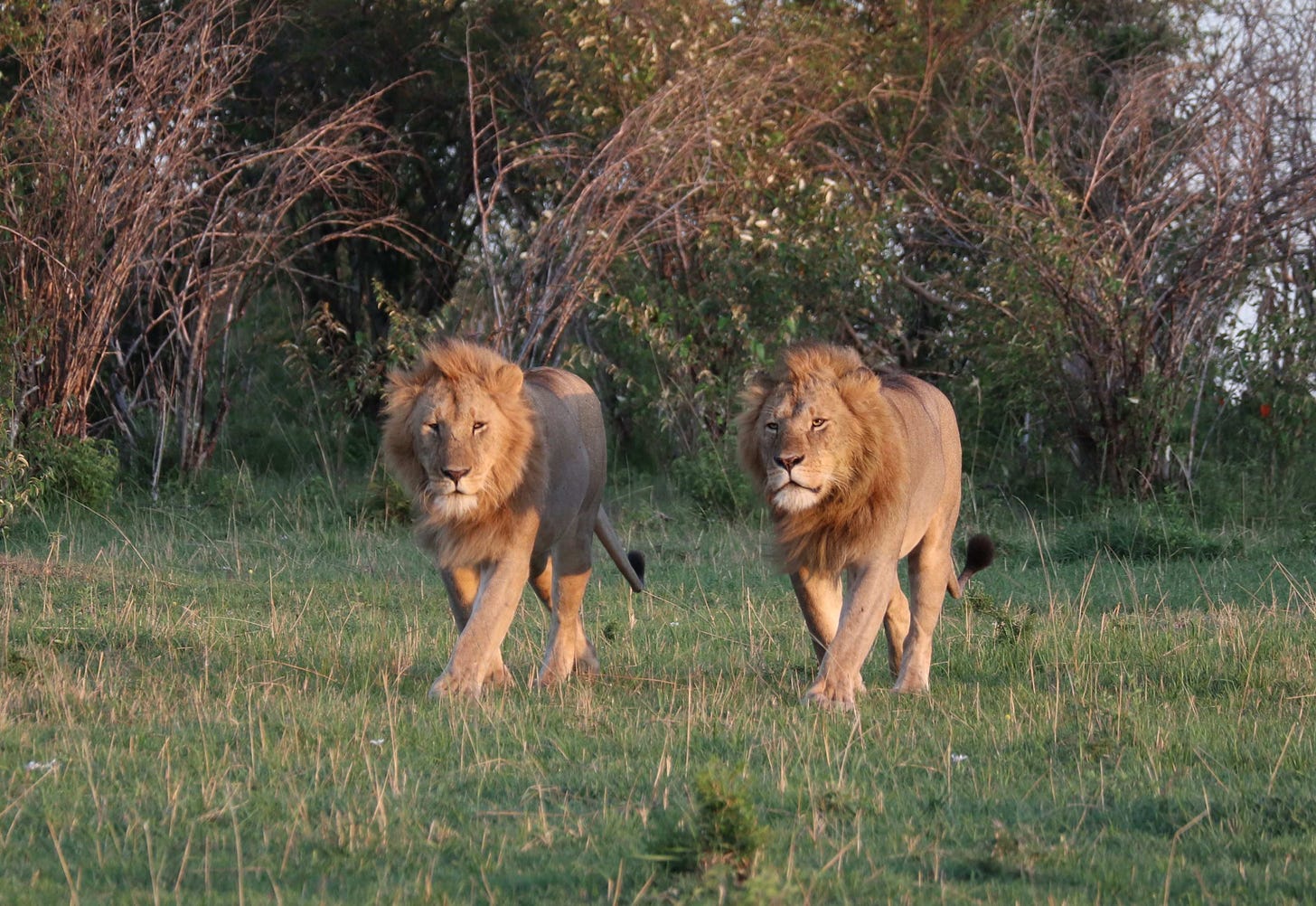
Fascinating, Melanie, looking forward to more.
Gorgeous pictures, Melanie! I look forward to your future articles about this fascinating place!